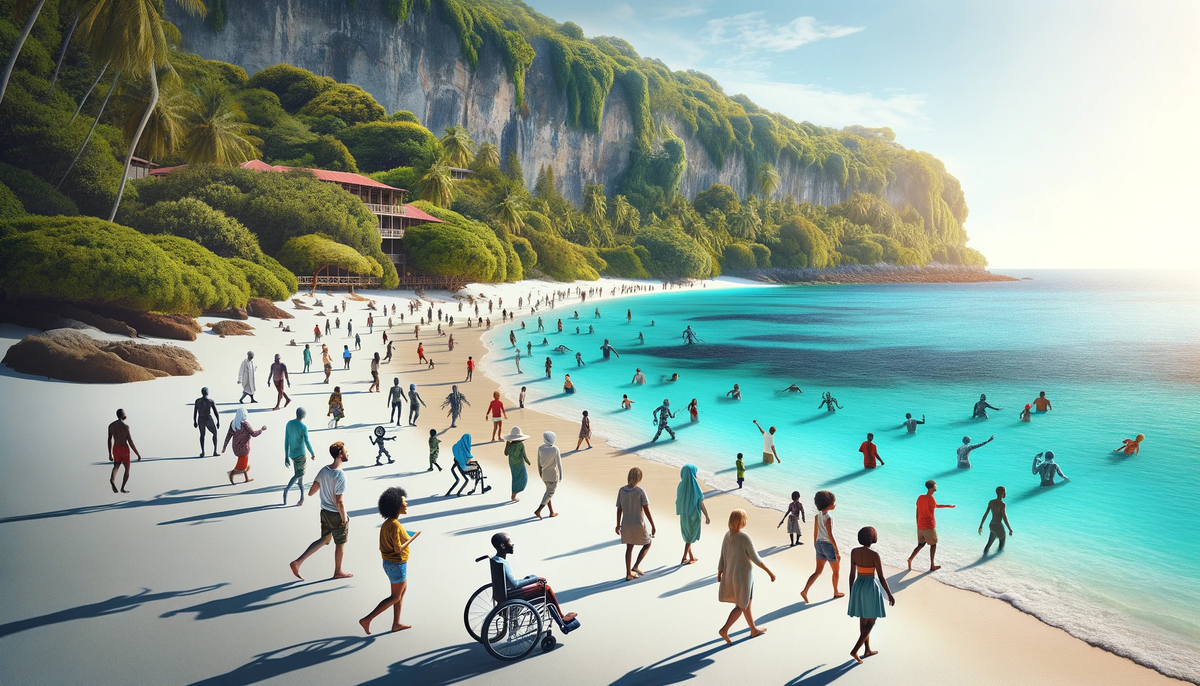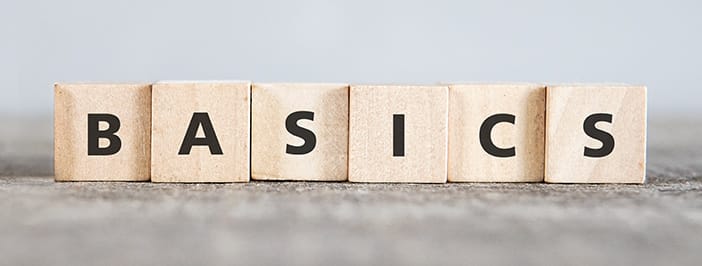On Discrimination: Filling the other person's shoes

Zanzibar is an interesting sort of place. It is a partly self-governing state that has its own president but is not fully independent. The people of Zanzibar once had complete independence, but after their colonial past, they united with Tanganyika to form the United Republic of Tanzania. This is quite understandable, especially considering the island state is 2 hours away from the coast of Dar es Salaam (the economic capital of Tanzania) by ferry (and I think about 20 minutes by plane) and quite small in terms of population and resources. It’s one of those pieces of history and geography trivia that we learn in school. Additionally, the place is beautiful and a must-visit for its lovely beaches and amazing seafood.
I had been to Zanzibar once, about five years ago. It was for work. Most of my time there was spent trying to understand the health care system (particularly ophthalmology). But then, I had also spent a lot of time visiting locations of historical significance. Perhaps the most interesting and life-changing experience that I had there was at the Sultan's Palace in Stone Town, Zanzibar. The building was large and had three stories. From one of the higher floors, one could see the sea and the buzzing activity in the bazaar nearby. It is a wondrous sight. Rich blue, with birds all around and a land of promise on the other side. Dozens of motor-powered ferries and cruise ships busily take people from the coast all the way to Dar es Salaam day in and day out. Even today, it makes me smile to pronounce that name: Dar es Salaam - the Abode of Peace. What a wonderful thought.
Today, the same building houses a museum, and there are artifacts from the colonial past that are placed there. This part of the world was colonized by the Germans and then the British. It was not the spices and the indigo they were after. It was the people. Zanzibar was the hub for what is commonly referred to as the slave trade.
There was a small metal cage placed in one of the exhibit rooms, and next to it was something that was written in Swahili (a language that uses English script for written communication that’s spoken extensively in Kenya and Tanzania). Another interesting piece of Trivia, “Hakuna Matata,” is Swahili. I clearly could not understand what was written there, and 4G was not yet a thing in Zanzibar at the time. So I could not translate using my phone. As curious as I was, I asked around to find out more. There was a guard in the next room, and he was not too happy with a nosy tourist. When I asked him in English what this was used for, he pushed his hands into his pocket and pulled out a key. The key was quick to open the lock on the cage. Out flung the gate. After a few seconds, he then said, “Go, sit inside." I was like, “Why not?" The cage was really small. While attempting to get in, I asked him what this was used for. This part he understood. He said, without a moment’s pause, “transport slaves."
It was only then that it struck me. These were not simply cages to lock someone in. These were cages that were used to transport men and women from Africa to Europe and the Americas. This was a remnant of the colonial past of the people of Zambia and an ever-present reminder of the atrocities that were committed against them and humanity. For a moment, I wanted to stop trying to get it. But then, something about that place made me want to get inside. I was to experience one of the worst atrocities ever committed. I got inside and tried to turn around. I managed to accomplish this feat after tearing off part of my shirt.
From inside that cage, I felt incredibly small. My imagination ran wild. This is what it must have felt like for someone to be locked up inside a metal cage, I thought to myself. It was only much later in the day (when I looked at the paintings on the walls) that I learned that these cages were stacked up one on top of another in dozens of rows and columns on ships. Men and women separated from their families and rushed to a nation far away in these little metal cages, without a place to relieve themselves other than on someone else. Without food or water. With the explicit purpose of being sold for their ability to carry out labor. I am somewhat certain that not everyone made it to the destination. I am also certain that some merchant must have factored this into computing his ‘Return on Investment’ from the voyage. From within that metal cage, you can feel the pain and suffering felt by thousands for decades. I felt as if I could hear them. This allowed me to reflect on the suffering that human greed is willing to cause to satisfy itself.
When I got out of that cage, I became silent. The sight from the top of that palace was not so beautiful anymore. I could imagine the horror the people must have felt every time they saw a ship on the horizon. The horror of facing the uncertainty of going to a land far, far away The pain of being separated from family The agony of watching their family members in similar cages. The helplessness. The horror.
Zanzibar was also important due to its location. It was like a place where you could collect slaves from all over Africa and 'store' them for a duration before a ship from Europe took them away to the Americas or Europe. Just the very idea of thinking of human beings as some sort of commodity makes me feel horrible. But this is the same horror that was executed in this palace for the whole of the 1800s. Well, this was very dark, but also very true.
I could delve deeper into the human aspect of this story, but that’s not what I want to do. I want to focus instead on something more current.
Just last week, when I completed teaching one of my two sales classes and was taking a break, I found that someone had parked a wheelchair at the entrance of the main building on campus. This typically meant that some students who had recovered completely from a fracture or some other injury could now walk on their own. Without use, the wheel chair was abandoned there and parked in a corner. After having spent almost an entire year with a good friend and colleague who is bound to a wheelchair, I just wanted to experience how it may feel to be in her shoes. I have often wondered about her ability to smile despite all odds and her commitment to her teaching craft.
I wanted to see the world the way she saw it. So I sat in the wheelchair. No one was around, and I tried to move it around. It was easy to move forward and back, but then I was not really able to make U turns. I then tried to climb up the ramp, but I failed miserably. I tried again and failed again. By this time, the students began to return from the canteen to attend the class. I began to have tears flowing down my eyes. I simply could not accept feeling so powerless. I quickly wiped off my tears, donned a smile, and started chatting up students. Some of them were shocked and thought I was injured. Others who knew me well figured that I was experimenting with the wheelchair. We chatted for some time, and then I got up, parked the wheelchair, and went to class to carry on business as usual.
I had shared the story with my best friends, and they all had something to say about it. I learned that using a wheelchair requires training and rehabilitation. There were tricks that I had to learn to get out of tricky situations. But then there was also the psychological element. The pain of being constantly seen as different. It's a subtle form of discrimination that's often overlooked. Moreover, my attempt at using the wheelchair highlighted the importance of accessibility in our environments. Buildings, pathways, and facilities are often designed without considering the needs of people with different abilities. This experience has motivated me to advocate for better accessibility on campus and in our community. Discrimination is simply everywhere. Reflecting on this experience, I've come to realize that empathy is not just about understanding someone else's situation but also about taking action. Whether it's through advocating for better accessibility, being more mindful of how we interact with people who have disabilities, or simply educating others about these challenges, every small effort counts.
Let’s take this one step further. With physical disabilities and slavery, it was quite straightforward for us to point out that there was discrimination. But there are thousands of ways in which we are discriminatory, and it’s not very easy for us to understand that. For instance, consider the biases and stereotypes that are deeply embedded in our society. These can be based on race, gender, age, sexual orientation, religion, or even socio-economic status. Often, we may not even be aware of our prejudices or the subtle ways in which they manifest in our interactions and decisions.
The challenge then becomes one of self-awareness and education. We need to actively seek to understand the perspectives and experiences of those who are different from us. This involves listening to their stories, empathizing with their struggles, and recognizing the privileges we may have that they do not. In our everyday lives, we can start by examining our own attitudes and behaviors. Are we making assumptions about people based on their appearance or background? Are we excluding certain groups, even unintentionally, from our activities or conversations? It’s crucial to be honest with ourselves and willing to make changes.
Ultimately, it’s about building a culture of empathy and respect. Just as I learned from my experience in Zanzibar and the brief moment in the wheelchair, every individual has their own story and struggles. Just the other day, I called out in class “My dear Bihari friends,” and one student took offense. He immediately stood up and told me that I was being discriminatory. I did not know at the time that the term Bihari was being used in a derogatory way. I immediately offered my apologies and admitted that I did not realize calling someone “Bihari” was offensive. While I am happy that a student was able to step up and tell me to my face that I was doing something wrong, I am not really sure if all acts of discrimination get spoken about similarly, in the open. Therefore, it’s important to remember that our actions, no matter how small, can have a profound impact on the lives of others.
In conclusion, discrimination is a complex and multifaceted issue. It requires both personal and collective effort to address As we move forward, let's commit to being more mindful, compassionate, and proactive in creating a world where everyone is treated with dignity and respect. I felt that I needed to write about this, especially now, considering that all of you will be going out into the world and starting your own careers. Just as we advocate for physical accessibility, we must also work towards creating an inclusive society where everyone feels valued and respected. This includes challenging discriminatory policies and practices and promoting diversity and inclusion in all areas of life. Let's not just be passive observers of history but active participants in shaping a future where respect, dignity, and empathy are the cornerstones of our society. A future where the lessons of the past inform our actions in the present to create a more just and compassionate world for all
I’m going to finish with the words of Bapu: “Be the change you wish to see in this world." And I’m going to take it a little bit further and say, “Be the change, and enable others to be part of this change as well.” It's about more than just recognizing discrimination; it's about actively working to dismantle it. This means challenging our own biases, speaking up against injustices, and making concerted efforts to understand and address the needs of those who are marginalized or disadvantaged in our society. It's about creating spaces where diversity is not just accepted but celebrated, and where empathy leads to action. Yes. This is a process, and it will take time. But we can do it together.



